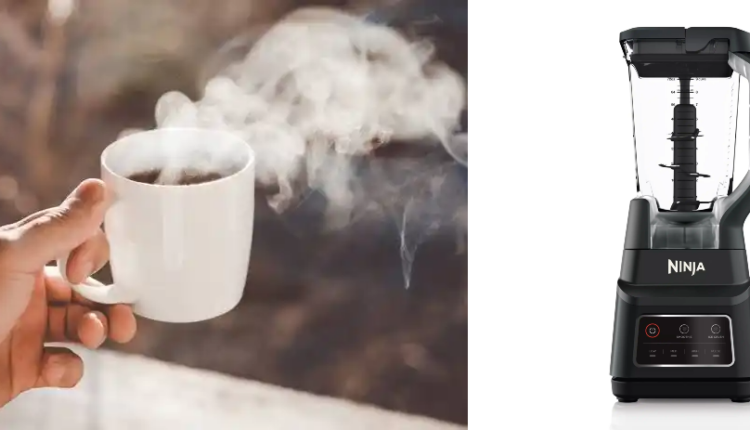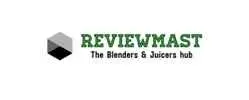
How possible Can You Blend Hot Liquids in a Blender?
Blending hot liquids in a blender – it’s a question that’s crossed many minds. Whether you’re a nutritionist looking to explore the world of soups, sauces, and hot beverages, or you are simply seeking convenience, then understanding the dos and don’ts of blending hot ingredients is crucial. Guess what! You’ve come to the right place.
Blending hot liquids can be a game-changer in your kitchen, but like I earlier mentioned, it’s important to understand the ins and outs before you dive in. In this guide, we’ll look into the benefits, challenges, precautions, and best practices for blending hot liquids, ensuring your culinary creations are both delicious and safe.
In addition to those mentioned above, we’ll explore the compatibility of various blenders with hot liquids, address safety concerns, and provide practical tips for achieving smooth results without a hitch.
Understanding Blenders and Hot Liquids: Point 1
Before we embark on our hot blending journey, let’s take a moment to understand the types of blenders that are up for the task. There are immersion blenders, perfect for soups and sauces, and countertop blenders that handle larger quantities. When selecting a blender, consider its material, capacity, and lid design. Choosing the right blender will set the foundation for successful hot blending adventures.
Benefits of Blending Hot Liquids: Point 2
Blending hot liquids isn’t just about convenience; it’s about unlocking flavors and nutrients that might otherwise be lost. Soups become velvety and smooth, sauces achieve a luxurious consistency, and hot beverages are taken to new heights. By blending hot ingredients, you’re creating a culinary symphony that tantalizes taste buds and nourishes the body.
Potential Challenges and Risks: Point 3
While blending hot liquids offers incredible benefits, it’s not without its challenges. Rapidly spinning blades can create pressure build-up, leading to potential splattering. Additionally, blending at high temperatures could affect both the blender and the ingredients. It’s crucial to be aware of these risks and take precautions to ensure a safe blending experience.
Precautions and Best Practices
To avoid mishaps, follow these precautions and best practices.
- Gradually heat and cool your liquids before blending to prevent extreme temperature changes.
- Leave ample room in the blender for expansion during blending to prevent splatters.
- Opt for blenders made with heat-resistant materials, and ensure the lid is securely fastened. If necessary, use blenders with vents to release excess pressure.
Steps to Safely Blend Hot Liquids: Point 4
Now that you’re equipped with precautions, let’s dive into the steps for a safe hot blending process.
- Start by preparing your ingredients and hot liquid.
- Begin blending at low speeds and gradually increase to higher settings.
- Remember to blend in short bursts, allowing your blender to breathe and preventing overheating.
By following these steps, you’ll create smooth and consistent blends every time.
Alternative Methods for Blending Hot Liquids
If you’re looking for specialized tools, consider alternative methods for blending hot liquids. Immersion blenders are perfect for soups and sauces, offering convenience and control. Hand-held frothers work wonders for hot beverages, frothing milk to perfection. For those seeking a dedicated hot blending experience, thermal blenders designed for high temperatures might be your kitchen’s new best friend.
Can You Blend Hot Coffee in a Blender?
Blending hot coffee requires some caution to avoid splattering. Choose a blender with a secure lid and consider partially cooling the coffee before blending. Using a pulse setting can help prevent sudden splashes. Experiment with blending times to strike the right balance between achieving a smooth texture and maintaining the coffee’s flavor.
Can You Put Hot Milk in a Blender?
Blending hot milk can be tricky due to the steam buildup that can occur. To safely blend hot milk, opt for a blender with a heat-resistant glass container or one specifically designed for hot ingredients. Start blending at a low speed, gradually increasing to avoid splattering.
Pro tip: let the milk cool slightly before blending to minimize steam-related mishaps.
Can You Blend Hot Soup with a Hand Blender?
Just link the Regular blenders, hand blenders are great for blending hot soups directly in the pot. Their immersion design minimizes splatter and allows for precise control. To use a hand blender for hot soups, ensure the soup has cooled slightly, and use short bursts of blending. Always keep the blender submerged to avoid creating a mess.
Can All Blenders Blend Hot Things?: Point 5

Not all blenders are created equal when it comes to blending hot liquids. High-quality blenders with durable components and well-sealed containers are your best bet. When considering whether your blender can handle hot ingredients, pay attention to the materials used in its construction, its power, and any specific manufacturer recommendations. Besides, I’ve mentioned the top choice blenders for hot liquids.
What Happens If I Blend Hot Liquids in a Ninja Blender?
Ninja blenders are known for their versatility, and many models are engineered to handle hot liquids. Their sturdy construction and secure lids help prevent leaks and ensure a smooth blending process. To blend hot liquids in a Ninja blender, allow them to cool slightly, use the appropriate settings, and be cautious with the blending speed to avoid accidents.
Can You Blend Hot Liquid in a KitchenAid Blender?
Certain KitchenAid blender models are designed to handle hot liquids, thanks to their robust materials and well-sealed containers. Always consult the user manual to confirm your blender’s compatibility with hot ingredients. When blending hot liquids, use lower settings and blend in batches if necessary to maintain safety and achieve the desired consistency.
Can I Put Hot Liquid in a Nutribullet?
Yes, you can blend hot liquids in a Nutribullet, but it’s essential to follow safety guidelines. Allow the hot liquid to cool slightly before blending, and never fill the container beyond the recommended capacity. Start at a low blending speed and gradually increase to minimize splatter. Always ensure the lid is securely in place to prevent accidents.
Can You Blend Hot Liquids in a Magic Bullet?
Certain Magic Bullet models are designed for hot blending, making them suitable for creating soups and sauces. It’s essential to check your specific model’s user manual for recommendations. When blending hot liquids, start at a low speed and work your way up. Give the liquid a moment to settle before opening the container to avoid sudden releases of steam.
Cleaning and Maintenance
After your hot blending adventures, proper cleaning and maintenance are essential. Safely clean your blender’s components to prevent lingering odors and stains. Regular maintenance will prolong the lifespan of your blender, ensuring it remains a reliable kitchen companion for years to come.
Expert Tips and Creative Recipes
To truly master the art of blending hot liquids, let’s gain insights from experts and explore creative recipes. Experienced chefs share their tips and tricks for achieving flawless blends. Get ready to tantalize your taste buds with recipes ranging from hearty soups to exotic hot beverages.
Addressing Common Concerns
Common concerns often arise when experimenting with blending hot liquids. Can blenders handle boiling liquids? Can glass blenders withstand high temperatures? What should you do if your blender cracks during blending? We’ll address these concerns head-on, by providing you with practical solutions and expert guidance in our next articles. So keep in touch with us often
Additional Resources
For those hungry for more knowledge, our Additional Resources section is a treasure trove of information.
- Discover links to reputable blender brands and models.
- See our Recommended blenders for blending hot liquids:
- Safety tips for blending hot ingredients:
- Scientific studies on heat’s effects on blender components:
- explore recommended kitchen accessories for hot blending
- Find safety guidelines from blenders’ authoritative sources.
Conclusion
In conclusion, the answer to the question “Can you blend hot liquids in a blender?” is a resounding yes—with the right techniques and precautions. Blending hot liquids is not off-limits it opens up a world of culinary possibilities, such as soul-warming soups to delectable sauces.
In essence, the point is that by selecting the right blender, adhering to safety measures, and learning from experts, you’ll embark on a hot blending journey that’s both delicious and rewarding. So, let’s raise a blended hot beverage to your culinary creativity and safe blending adventures using any available choices from Ninja blenders to Nutribullets, or other various models that can handle hot ingredients safely and effectively.

